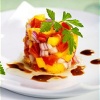| |||||||||||||||||||
| |||||||||||||||||||
| |||||||||||||||||||
| Qi Mail™ is an opt-in acupuncture newsletter available by subscription only. We neither use nor endorse the use of spam. You are welcome to forward Qi Mail™ to friends and colleagues at any time. You can cancel your subscription at any time by clicking the link at the bottom of this email. | |||||||||||||||||||
Ken and Diana Harbour

- People who want to make a difference with hands and heart!
- You can read about us at www.globalgifts.org and www.bluecraneacupuncture.com www.kenharbour.com
Tuesday, June 8, 2010
June Newsletter
Tuesday, June 1, 2010
Calm Spirit ~ Help alleviate stress!

Calm Spirit from Health Concerns
Modified Ding Xin Wan
Calm Spirit is a Chinese herbal formula that is used to alleviate stress associated emotions such as anxiety, depression, anger, and restlessness due to heart yin deficiency.
Calm Spirit is also used for insomnia, restlessness, dizziness, spontaneous sweating, constipation due to stress, dryness of the mouth, and poor memory.
Calm Spirit is based on the traditional formula, Heart Stabilizing Pills (Ding Xin Wan). It is intended to treat patients who present with deficiency of heart Yin. Individuals who experience prolonged mental stress often suffer insomnia, restlessness, loss of memory, dizziness, and sometimes constipation. The ingredients in this formula are aimed at: tonifying heart Qi and Yin: Biota (Bai Zi Ren), Polygala (Yuan Zhi); tonifying and nourishing the blood: Tang Kuei (Dang Gui); calming the heart and spirit: Biota, Fu-shen, Zizyphus (Suan Zao Ren), Amber (Hu Po); moistening the intestine: Biota, Tang Kuei, Ophiopogon (Mai Men Dong); removing heat from the heart: Ophiopogon. Codonopsis (Dang Shen) is added to tonify Qi in general and help generate fluids. Because stress may also induce anger, Amber and White Peony (Bai Shao) help remove liver stagnation.
The enzymes Catalase intercepts free radicals produced during stress. Free radicals damage body tissues, especially those of the heart and brain, and interfere with normal energy production and with memory. Other enzymes derived from Aspergillus assist in the digestion of food, which is often a problem when stress levels are high. Magnesium is a natural tranquilizer and vasodilator, and calms nervous activity; it also acts as a catalyst in the energy production that occurs in cell mitochondria. Taurine has been used to control heart arrhythmia and hypertension, particularly under conditions of stress.
Ingredients
Magnesium Aspartate (75mg), Taurine (100mg), (300mg), Akmylase, CereCalase, Protease, Catalase, alpha-Galactosidase, Lipase, Glucoamylase, Cellulase, Malt Diatase, Biota seed (Bai Zi Ren), White Peony root (Bai Shao), Tang Kuei root (Dang Gui), Fu shen sclerotium (Fu Shen), Polygala root (Yuan Zhi), Zizyphus seed (Suan Zao Ren), Ophiopogon tuber (Mai Men Dong), Codonopsis root (Dang Shen), Amber resin (Hu Po)
calm spirit chinese herbal formula for anxiety & insomnia
Subscribe to:
Posts (Atom)




